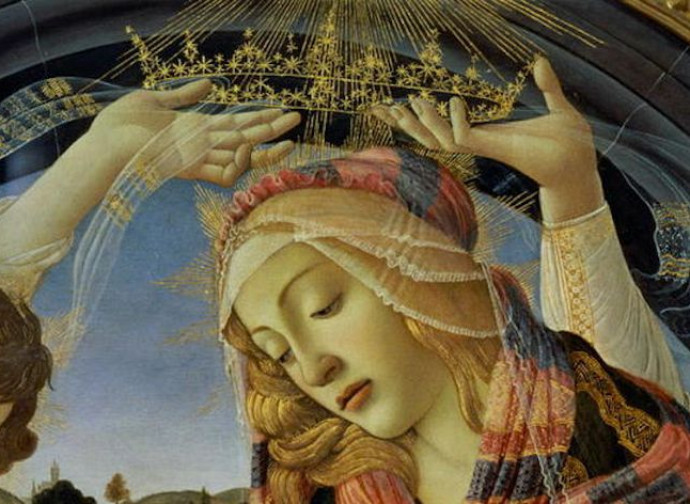Mary Queen
This celebration falls in the octave of the Assumption, to underline the very close link between these two glorious mysteries

At your right is seated the Queen, shining with gold and gems”. The liturgical re-enactment of Psalm 44 reminds us that the Church today celebrates Mary Queen. The celebration falls in the octave of the Assumption, to underline the very close link between these two glorious mysteries meditated on in the Holy Rosary. It was Paul VI who moved the commemoration of Mary's queenship to 22 August (the original date of 31 May remains in the calendar for the ‘extraordinary form’ of the Roman Rite). The merit of having instituted it goes instead to Pius XII who in 1954 - Marian Year and 100th anniversary of the solemn definition of the dogma of the Immaculate Conception - issued the encyclical Ad Caeli Reginam. The encyclical, as Pope Pacelli himself recalled, was in response to the “insistent demands” of the Christian people, intensified after the decision of his predecessor Pius XI to institute the solemnity of Christ the King, also urged by many devout petitions.
Mary has been honoured since ancient times as Queen and with this title she is invoked 13 times in the Loreto Litanies. The first reason for her royal dignity is her divine motherhood, which admirably associates the Mother with the mysteries of her Son. At the same time, recalling that “in the full, proper, and absolute sense, only Jesus Christ, God and man, is King”. Pius XII emphasized that “the Blessed Virgin must be proclaimed Queen not only because of her divine motherhood, but also because of the singular part she had in the work of our eternal salvation”. Queen by grace and merit, therefore, who cooperated in the Redemption as “partner” of the divine Son, accepting His cross and participating maternally, in perfect mystical union, in His sufferings. For this reason the ancient Fathers, beginning with Saint Irenaeus of Lyons (c. 130-202), exalted Mary as the new Eve, taking their cue from the Pauline comparison of Jesus as the new Adam. With her faith and obedience which made her Mother in the order of grace, Our Lady was able to remedy the disbelief and disobedience of our ancestor in the order of nature.
The disciple and biographer of Saint Anselm of Aosta, Eadmer of Canterbury, quoted by Pius XII, wrote: “just as... God, by making all through His power, is Father and Lord of all, so the blessed Mary, by repairing all through her merits, is Mother and Queen of all; for God is the Lord of all things, because by His command He establishes each of them in its own nature, and Mary is the Queen of all things, because she restores each to its original dignity through the grace which she merited”. Mary's queenship in the natural and supernatural order, on earth and in heaven, is implicit in her own name, according to one of its different interpretations. Saint Jerome writes: “One must know that Mary, in the Syriac language, means Lady” (Liber de nominibus hebraicis). From what has been said derives her unlimited power in interceding with God for her children because, as Blessed Pius IX said, the heavenly Mother “obtains what she asks and cannot remain unheard”. She acts as mediatrix of all graces.
Mary is the woman with a crown of twelve stars (Rev 12:1), called from eternity to crush the head of Satan (Gen 3:15), the first enemy of God and of all mankind. The Virgin's help must therefore always be asked with great trust to have “help in adversity, light in darkness, consolation in sorrow” and above all, Pius XII writes again, to “free oneself from the slavery of sin” and deserve to contemplate the Most Holy Trinity with her one day.




